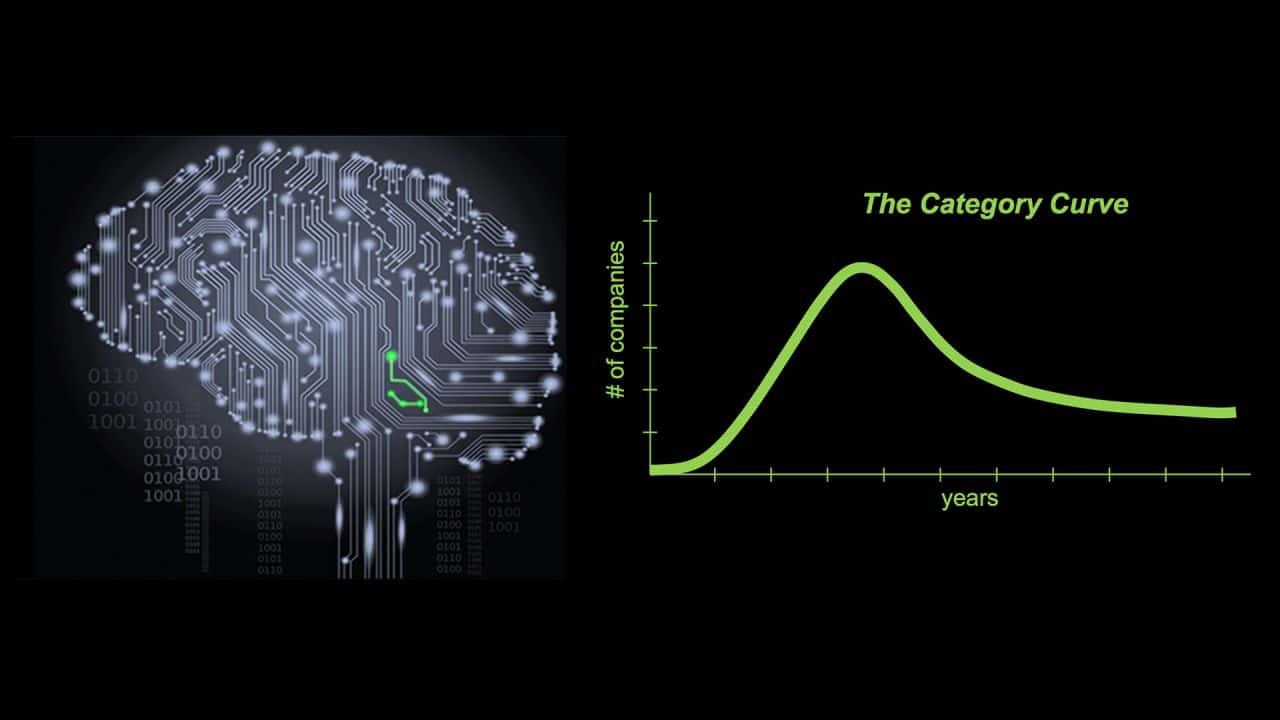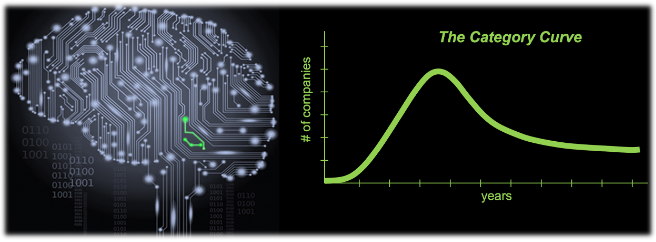What is Category Design?

And Why Is It Critical to Your Strategy and GTM Execution?
Ever wonder why:
Certain companies consistently lead and dominate markets they are in?
Or a superior product can fail in the market (along with the company)?
Where It Starts
To answer these questions we need to dig in to the most “micro” aspect involved. It starts with who we are and how our brains are wired. This is at the most elemental components of our thinking and behaviour: concept; and category.
Think about how we come into this world and begin to experience and understand concepts, around “hungry or full” or “unhappy or happy”. In parallel, we also immediately begin categorisation. It’s how we manage and prioritize what truly matters to us in a noisy, complicated world. We are thus wired from day one to create and organize around categories. And this is critical to understand not only for communicating and engaging with our audience, but also for corporate strategy.
Kahneman’s “Thinking Fast and Slow” explores this architecture of our minds, and also our inherent biases. We generate impressions and inclinations very quickly, and distinguish the surprising from the normal, such as a new way to look at a problem, or a problem we didn’t know we had. This is the “thinking fast” process.
The “thinking slowly” side of our mind recognizes patterns, or a known problem, and creates “priming” which is a bias around that association. This is why a brand or a company becomes associated with a problem/solution (and thus the category as well).
We can take this now a step further, with the bio-chemical reactions in our brain for problem recognition and categorization. This has finally been mapped in ground-breaking 2016 research: “How we put the world in order: Neuroscientists find sorting center in the brain”.
Not only do we differentiate when encountering a different way to look at a problem, but we use a different physical part of our brain to create the neurons/synapse for that new idea/category. (Read more here on this.)
These are incredibly powerful aspects of the “micro” elements and underpinning of Category Design, and an opportunity to leverage to our advantage.
…..But there is then also the broader aspect of how new markets and categories evolve.
Where It Goes
Taking a look at this “macro” aspect of categories and their study inevitably takes us to Dr. Paul Gerovski, Nobel winner in this field.
Gerovski observed an incredible consistency of how new markets and categories are created and evolve. His research and findings show that new categories are not driven by customer demand, because customers cannot accurately identify or describe their future needs. Rather it is a “supply push” by innovators. These early innovators, engineers, or entrepreneurs often are not the players who eventually lead the market and category. Rather it is the “consolidators” who tell us a clear story and demonstrate the “dominant design”.
The consistent shape and evolution of the category is a slightly flattened bell curve, showing a few initial entrants, to take-off and rapid-growth in number of companies (especially as the dominant design emerges), and then a flattening of the curve as companies fail/exit, and the category leader fully emerges.
This un-orchestrated push of new tech and innovation at the outset thus becomes a ripe opportunity to describe the over-arching problem that is relevant to the audience. It is this problem-centric design, enabled with a clear story and point of view, that is the accelerant to new categories growing, scaling and being led by a dominant player.
The “so-what” in all of this is pointed out in the book: “Play Bigger: How Pirates, Dreamers, and Innovators Create and Dominate Markets”. The book’s large, multiyear data-set shows that the Category King (leader) consistently takes up and controls 76% of the Category’s economics. This is then followed by a distant second, and third player.
With these consistent patterns in our brain wiring, category evolution and business outcome, the key question then becomes: how can we fully exploit these principles?
The Problem is the Problem
At both the micro (the brain) and macro (the category) it is the problem and its articulation that is driving the outcome. It is not articulating slightly better; it is a new problem (or way to look at it) that we likely didn’t realize that we have. It stimulates us and sets up that individual category in our brains. It is continually reinforced and entrenched across your audience with a viral, engrossing Point of View that presents the problem, and the novel solution, and ultimately drives the new category that coalesces.
This is The Power of a Point of View. It is problem-led and tells us why this matters to us, and why this is an entirely new category.
But a category cannot be a singular company. It can’t truly be a category and only be your company….
The Bigger Picture: The Ecosystem
As you take your Category Design forward you need to recognize and describe the entire Ecosystem that surrounds this new category. This enables you to show your independence of thinking, your thought-leadership, and the clarity of your strategy.
What are the adjacent technologies? The regulatory, certification, or relevant government agencies? The channel partners, or distribution, or marketplaces? The list can go on, but the point is that you need to map and visualize this new category and the players attached to it.
This shows “your slice of the pizza” and where you sit, but it also lends credibility to the category by showing it is more than just your company and product. This critical step also catalyses your Ecosystem Strategy and how you will nurture and grow your relationships and the category.
The Category is the Strategy
So why do certain companies consistently lead and dominate markets they are in?
It’s because they are not just following a market and category – they are continually defining it.
They are delivering a compelling Point of View that cuts through all the noise. This is not just “we’re better” and product features – it’s about being the thought-leader and showing the problem-centric design around the category, products and customer.
It’s your opportunity to lead, not follow! And as you think about Category Design, consider this fundamental truth:
You will always be in a Category.
The question then is: Do you want to position, or be positioned?
If you don’t define the Category and the problem, then someone else will.
Also published on Medium
Solutions
The Out-Position team has experience and a track-record that you can leverage and catalyse for your category strategy and design.
Contact us
We work alongside you for this design-thinking process, from the problem clarity and category defined, to a powerful point of view.
